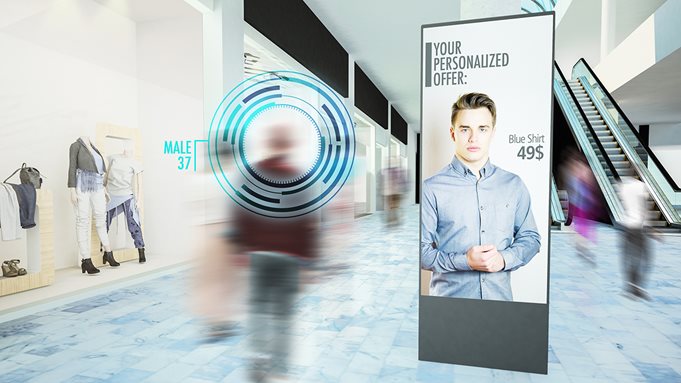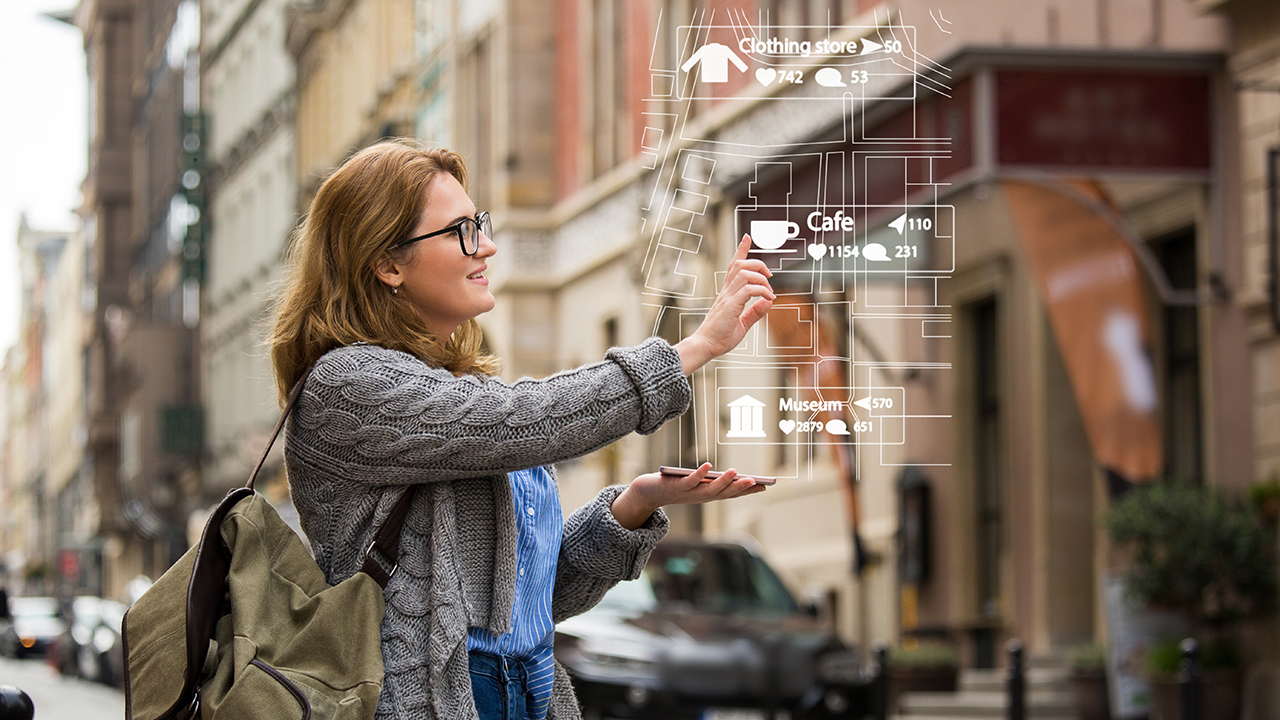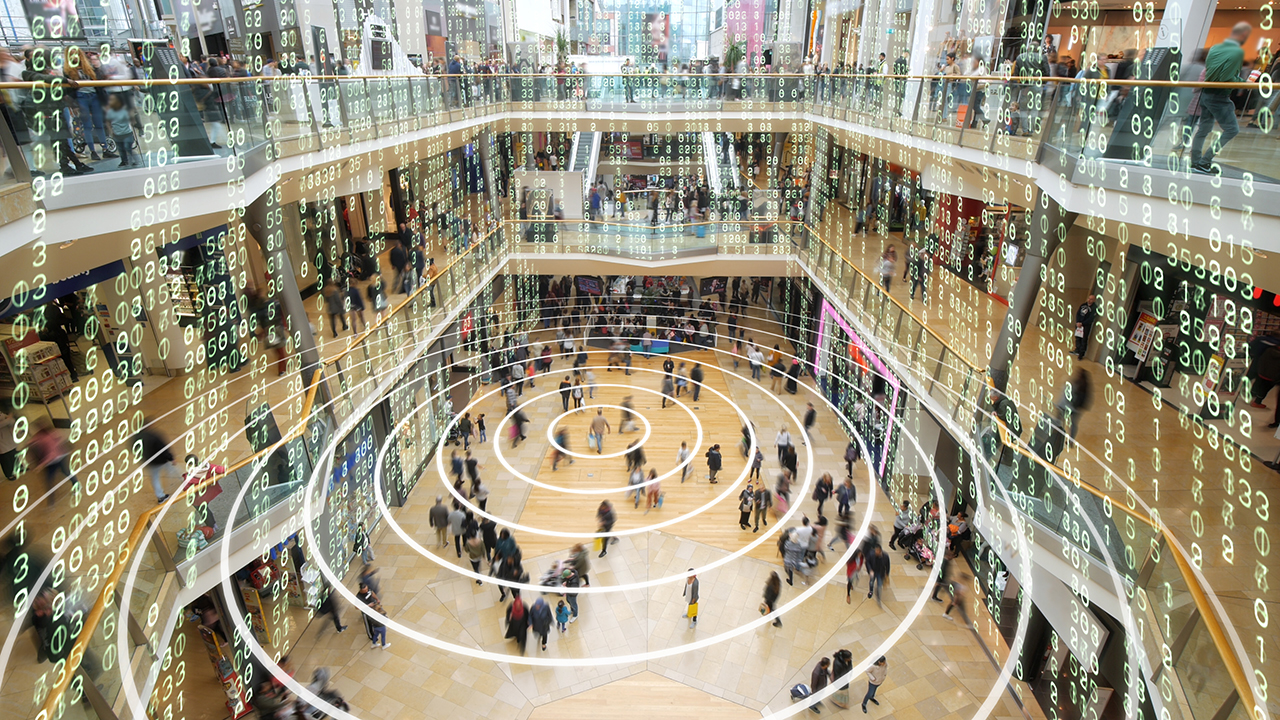The retail shopping experience today is about data-backed customization and experience. With advances in IoT networking, connectivity and artificial intelligence, retailers can increase their reach and impact by moving toward more innovative, customer-focused technologies.
Additionally, 5G deployment is underway, which means the opportunities will continue to expand with higher bandwidth and faster throughput. Digi is one of the key solution providers rolling out high-performance, next-gen wireless communication solutions, like the
Digi EX50 5G cellular router with Wi-Fi 6, extended temperature range, and integrated software for management, reliability and security.
In this post, we will take a look at what's to come as the retail space expands into new horizons.
Retailers Are Personalizing the Shopping Experience

A recent Microsoft research report found that “Consumers are willing to share data with brands – 63% of US consumers say they’d share more information with a company that offers a great experience.”
This means companies have the opportunity to personalize the sales journey. With the enormous abundance of data now available, firms can get much better insights into which products may interest their customers or potential customers.
Taking another look at the data, “91% of consumers are more likely to shop with brands who recognize, remember, and provide relevant offers and recommendations.” Customers like to feel that the shopping experience is being tailored to their needs. It’s no surprise that nine out of ten people prefer relevant suggestions for products that might interest them.
Another interesting data point is that according to research from the SDP Group, “37% of shoppers who clicked a personalized recommendation during their first visit came back, compared to only 19% of shoppers who didn’t click a recommendation.”
The tailored shopping experience is meaningful and personal. On the backside, it is data-driven. For this reason, the power of LTE networks, artificial intelligence, and the emergence of 5G will have an explosive effect on the capabilities of retailers to deploy applications that personalize shopping.
How Will Artificial Intelligence Impact Retail?

Personalized recommendations sound great in theory, but sifting through terabytes of data to determine personal preferences is no casual task. Enter AI, the computing powerhouse that is driving the personalized shopping experience revolution.
Artificial Intelligence relies heavily on algorithm-intensive machine learning (ML) to deliver results. Both AI and ML are fast growing and delivering results. According to CB Insights, “Retail AI startups raised $1.8B across 374 deals from Q1’13 — Q3’18.”
Let's look at some of the most exciting initiatives impacting retail as a result of artificial intelligence and machine learning.
1. Dynamic Price Adjusting
One thing AI is great at is sorting through enormous amounts of data to detect trends and predict outcomes. While humans are great at creating compute models and using calculation tools, computers can accelerate those calculations and utilize predictive analytics to enable faster and more automated price adjustments.
Artificial Intelligence can rapidly analyze historical sales data, and factor in the success of previous promotions and sales figures for similar product categories. It can then use all of this data to predict the optimal price point for a product. This is a dynamic process and prices can be continually tweaked as new information becomes available.
Price optimization isn’t limited to physical products either. The hospitality industry can benefit as well. For example, Airbnb automatically adjusts prices upward when demand is high and the airline industry is infamous for its enigmatic, AI-driven pricing schemes.
2. Just-in-Time Manufacturing
Supply chain and manufacturing are also taking advantage of leading edge technologies, as we described in the blog post, "IoT and Supply Chain Management: A Digital Revolution."
Just-in Time (JIT) manufacturing is one strategy that optimizes and improves processes in a way that can dramatically impact the bottom line – building products for immediately anticipated demand instead of for inventory. Inventory has two downsides: it needs to be warehoused and it can result in losses if that inventory is never sold.
By its nature, JIT manufacturing results in smaller production runs. If a product’s design needs to be changed or is proven defective, only a small batch is affected. Smaller runs also reduce costs, which can free up capital for other more productive uses.
The challenge is in predicting optimal timing for a production. Produce too much and the now downsized warehouse may not be able to hold the products. Produce too little and the retailer may run out of a product.
Artificial Intelligence can analyze dozens of data points in order to make the best possible prediction about when to initiate a production run. Demand forecasting is the perfect use for a supercomputer, due to its complexity and the amount of data to process quickly. With its sidekick, machine learning, AI can learn from its mistakes so that its JIT manufacturing predictions improve over time.
3. The Cashierless Retailer
Amazon started out with a single store in Seattle, the first of its kind: a convenience store without cashiers, where the cameras outnumber the shoppers. Those cameras keep track of products as they’re placed in the cart or basket and customers can leave at any time, without standing in line to check out.
The first store was a concept; no matter how good the cameras were it was impossible to say how well they would function. However, the trial period is over and the results have been good. So good, in fact, that Amazon has announced that they’d like to build thousands of these stores, from coast to coast, California to Connecticut.
The technology behind these stores is great fodder for front page features. However, what really has retailers excited is the treasure trove of data that a cashierless store offers. Loyalty cards already help retailers keep track of customers, but they are optional.
With a cashierless store every person who enters the store is identified via an app and each purchase is catalogued. That’s a lot of data. Combine it with a cutting edge artificial intelligence system and personalized marketing and JIT manufacturing are that much easier.
4. Virtual Greeters and Assistants
If you visit Digi headquarters, you can get a taste of what's to come in this space. Virtual greeters, such as "Angie" – a PRSONAS creation by nuMedia Innovations – can welcome visitors to a retail store or entertainment experience and provide personalized guidance.
We predict this will be a growing trend as retail owners look to provide a consistent, customer-focused experience, when and where personnel cannot be on hand.
How Will 5G Impact Retail?

The transformations underway in the retail sector are dynamic, exciting and ongoing. Where there are challenges due to the shift away from foot traffic to the online shopping experience, there are just as many opportunities. In the future, look to 5G to further enable retailers to bring the shopping experience to the shopper.
The full deployment of 5G is underway, and will require the testing and deployment of devices that support the next generation networking model, but it's certainly all on the horizon. We will see more retail IoT applications that will be optimized for the greater bandwidth and faster throughput. According a Forrester Research article, this will include:
- 5G-enabled augmented, mixed and virtual reality applications including sales support.
- 5G-enabled IoT services that support major enhancements in the supply chain.
- 5G enabled retail technologies supported by "big data" customer insights.
The Infrastructure for Next Gen Retail
Artificial Intelligence, machine learning and 5G will certainly change the face of retail in the next decade. The critical requirement behind it all will be a strong backbone for network throughput and reliability to ensure a quality experience and critical uptime, while also supporting consumer expectations for connectivity – a backbone that provides the performance you need today and helps your business position for the 5G future.
Today, cellular LTE connectivity provides critical data throughput and uptime support in two ways:
- Backup cellular connectivity that enables network connections to quickly and automatically "failover" from the primary wired connection to cellular.
- Primary cellular connectivity with dual-SIM functionality to ensure that if connectivity to one cellular carrier is compromised, the other one kicks in immediately.
With more attractive pricing on cellular plans available today and the dramatic shifts toward more interactive experiences that require highly reliable connectivity, we are seeing a trend toward cellular as primary, but both of these scenarios can provide the critical service and uptime needed for the demanding retail, kiosk and digital signage needs of today and tomorrow.
Digi supports all of your network connectivity and migration planning, whether you need to get from 2G or 3G to LTE today, or you want to ensure that your LTE infrastructure is poised for 5G networks. Contact us to learn how.